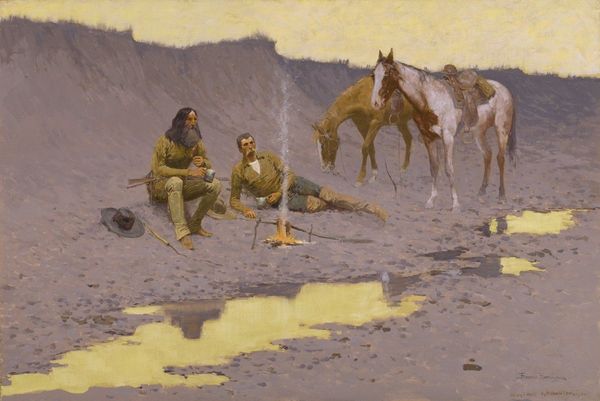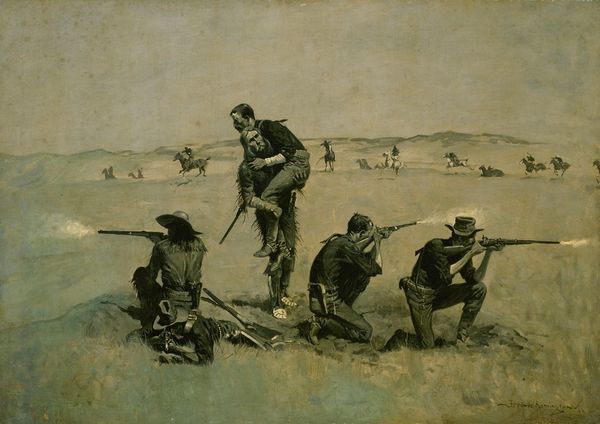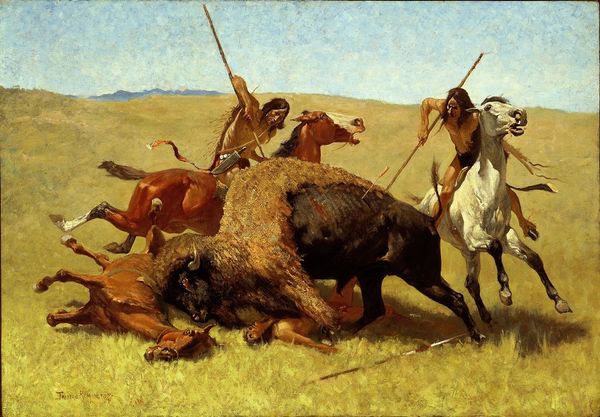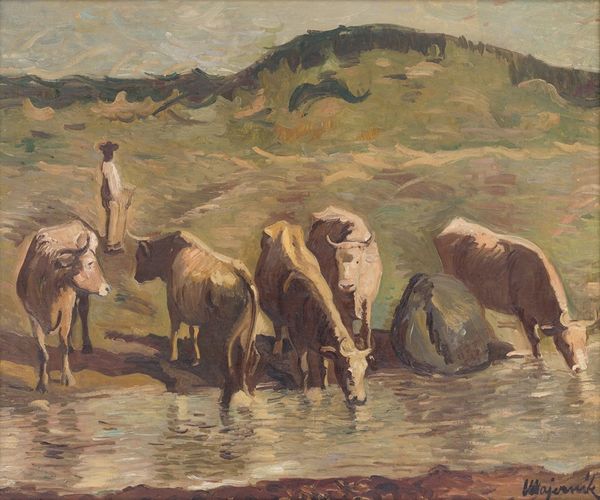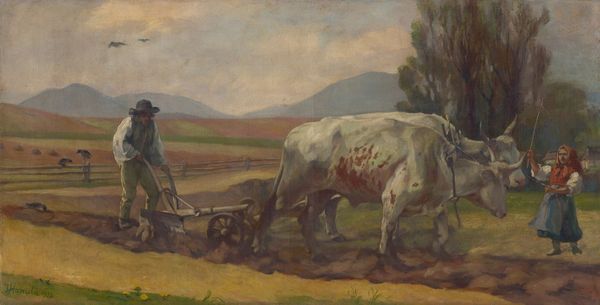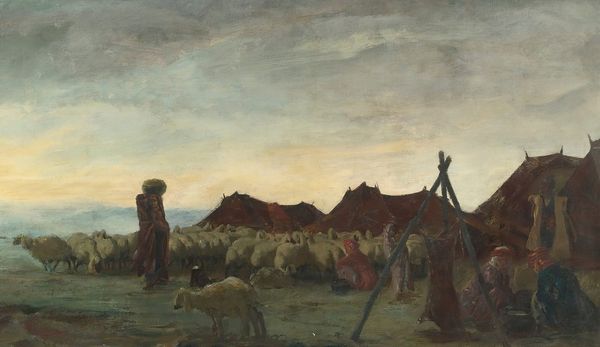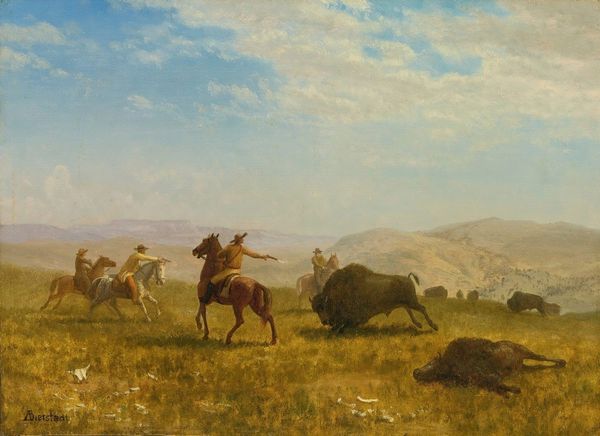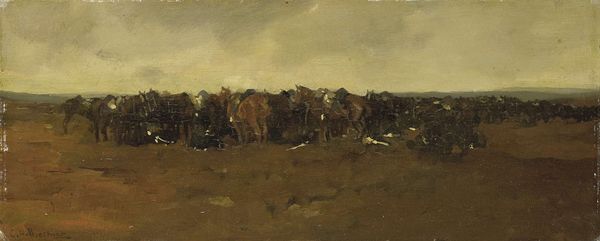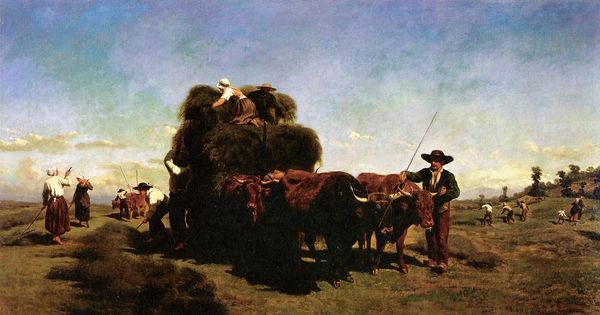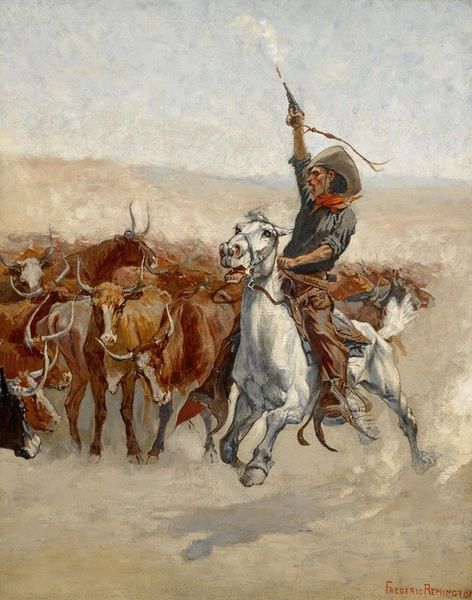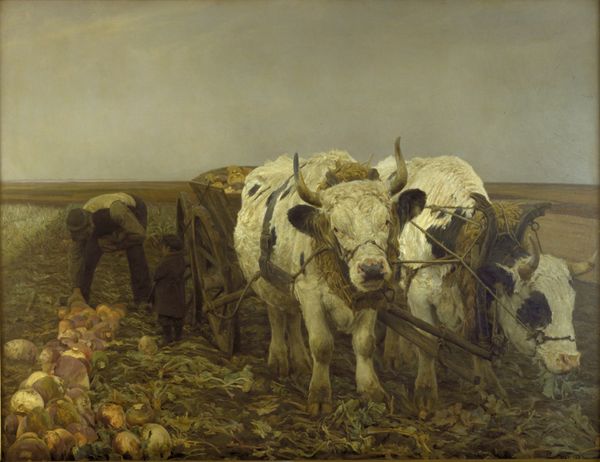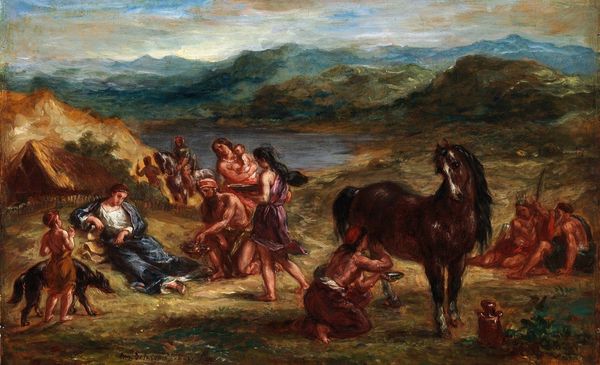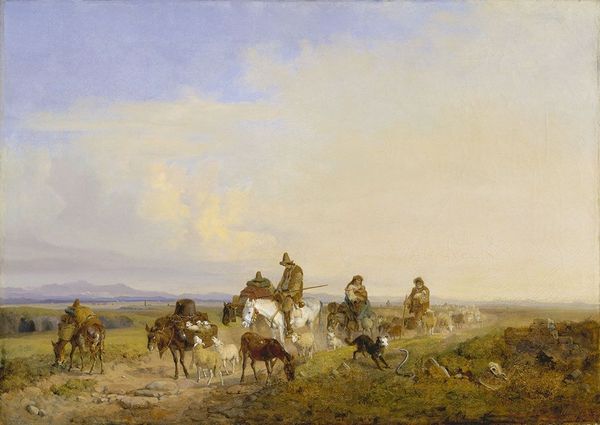
painting, oil-paint
#
gouache
#
painting
#
oil-paint
#
landscape
#
oil painting
#
genre-painting
#
history-painting
#
realism
Copyright: Public Domain: Artvee
Curator: This scene just exudes a sense of immense loss. A heavy silence, a harsh stillness permeates the landscape. Editor: Indeed. The somber palette and the lifeless figures scattered across the canvas definitely speak to some form of tragedy or reckoning, but I want to know how Remington put this together, what are his materials here? Curator: Remington completed "What an Unbranded Cow Has Cost" in 1895, utilizing oil paint and gouache. It depicts the aftermath of a confrontation, and is charged with the violent symbolism of the Old West and disputes over resources and labor. The central figure remains upright amidst the fallen. A grim reckoning with survival. Editor: That use of gouache intrigues me, actually. Considering that it adds a distinct opacity. What we're seeing then is, technically, layers upon layers of grounded pigment concealing and revealing each other to simulate dust, fatigue and the sort of visual drama one needs in portraying scarcity, wouldn’t you agree? Curator: Absolutely. It also hints at deeper stories, anxieties around ownership, and the brutal cost of survival. Remington effectively communicates an allegory about justice and consequences in frontier life. That single standing figure, for instance, embodies stoicism and a resolve perhaps rooted in self-preservation, but more broadly reflecting a societal shift. Editor: Stoicism, sure, but I also notice a kind of perverse functionality in the standing figure – he isn't exactly heroic; more like, "Well, somebody has to tally the losses." Even the so-called “genre-painting” aspect seems tinged with capitalist anxieties, about who gains, who loses and how goods change hands violently. Curator: Right, we see not just an objective recounting of the past but also anxieties regarding resource allocation within a society undergoing rapid change. Remington isn’t romanticizing anything. He shows us the consequences—emotional, physical, economic. It feels so desolate, so...finite. Editor: It does bring the labor conditions and conflicts of the Old West into stark relief. It forces us to consider how contested space, material scarcity, and legal definitions literally played out on bodies, human and animal alike. I can almost feel the texture of roughspun shirts and leather through Remington's chosen pigments. Curator: It seems the mythos is really exposed here in a unique way by the material. The "Wild West" revealed as just a hard place to work with scarce resources, made harsher by ideologies clashing… fascinating. Editor: Indeed, from Remington’s methods, through these painted images, and down to us consuming this piece centuries later. An unblinking statement on the harsh realities and legacy of the American West, that has as much to do with markets and materiality as myths and heroism.
Comments
No comments
Be the first to comment and join the conversation on the ultimate creative platform.
